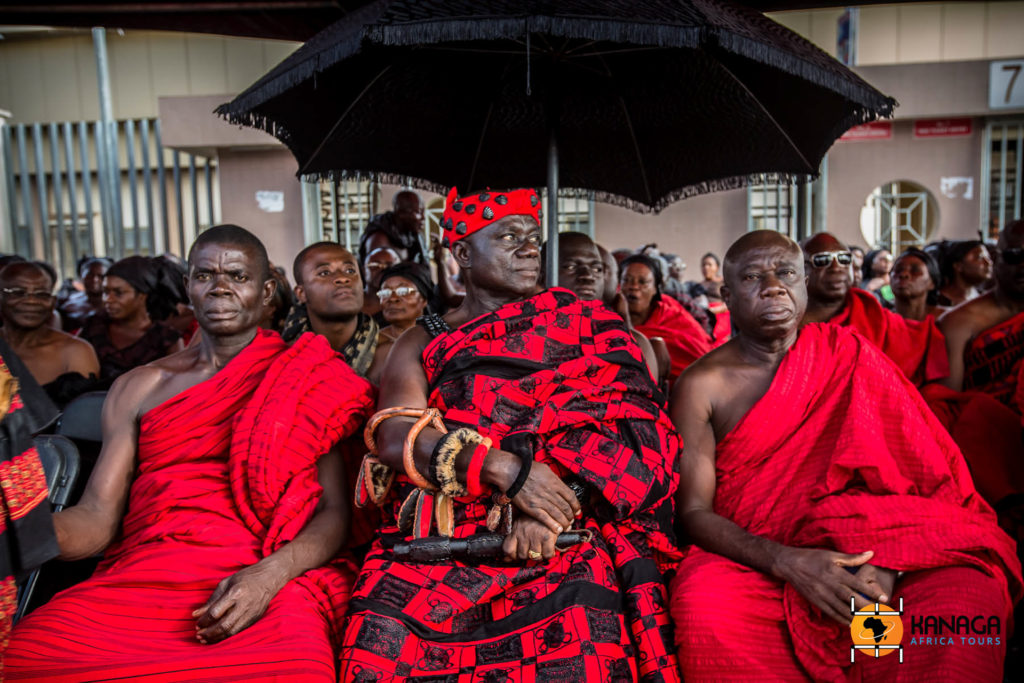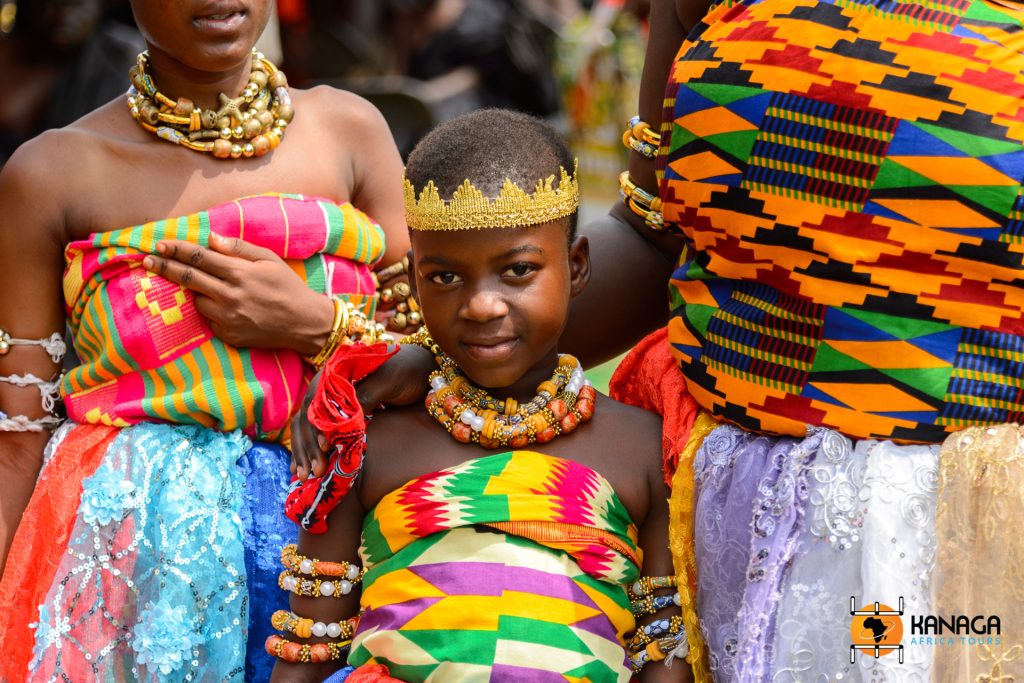© A. Pappone
The visit of the city of Kumasi, the second largest in Ghana, will immerse oneself in the history of what was once one of the most powerful and ancient kingdoms in West Africa.
Of Akan origin, the Ashanti people were the holders of the trade in raw materials with the great European powers, making their fortune mainly from the trade in gold and slaves, captured during centuries of expansionism and tribal struggles. It is no coincidence that the first ruler of the unified Ashanti Kingdom, Osei Tutu I, was enthroned in the 17th century on a golden stool, which legend has it came down from heaven.
A people who have kept their customs and their ancestral faith intact, today they live in perfect harmony between tradition and modernity.
Apart from the interesting educational visits to the city’s museums and sacred historical sites, which retrace and illustrate its earthly and spiritual glories, in order to really get in touch with this ancient culture, which is still alive, it is imperative to participate in one of the traditional ceremonies that have been perpetuated unchanged for centuries.
The Akwasidae, is generally referred as a festival, but it is actually the most heartfelt religious ceremony of the Ashanti people. A true collective ritual event, every 42 days it renews the devotion of the subjects to their king (Asantehene) and their gratitude to the supernatural spiritual forces, without which earthly power could not exist.
A whirlwind of wild dances, rhythm and percussion, colours, smells and vestments. The clan chiefs arrive in lavish procession before the supreme leader and the traditional priests, each accompanied by his court and servants. A dizzying display of rich kente cloths, gold jewellery, umbrellas, sedan chairs and royal canes, a riot of adinkra symbols, the ancient metaphorical and ornamental script that recounts the glories of the Ashanti, accompany a multitude of gifts for the king and conclude with an enormous propitiatory sacrifice, in gratitude to the ancestral spirits and supernatural forces.
The importance the Ashanti attach to the afterlife, as in all voodoo and animist cultures, is also reflected in the funeral ceremonies. Rather than sad events, they seem to be real festivals, spiced with songs and wild dances. Anyone can take part in them, in a collective moment of festive sharing, bringing comfort to family members and paying homage to the dead, not so much for what he or she has achieved in life, but above all for what they will do in the afterlife and the protection they will send from the powerful realm of the dead. The colours of these veritable parades are red and black. Close relatives of the deceased wear bright red, while acquaintances wear black. The higher the social rank of the family, the more lavish the ceremony. The head of the clan is obliged to attend, accompanied by his servants and immediately recognisable by his umbrella and royal cane, the display of gold jewellery and the precious adinkra cloth, which is reserved only for members of royal families.







